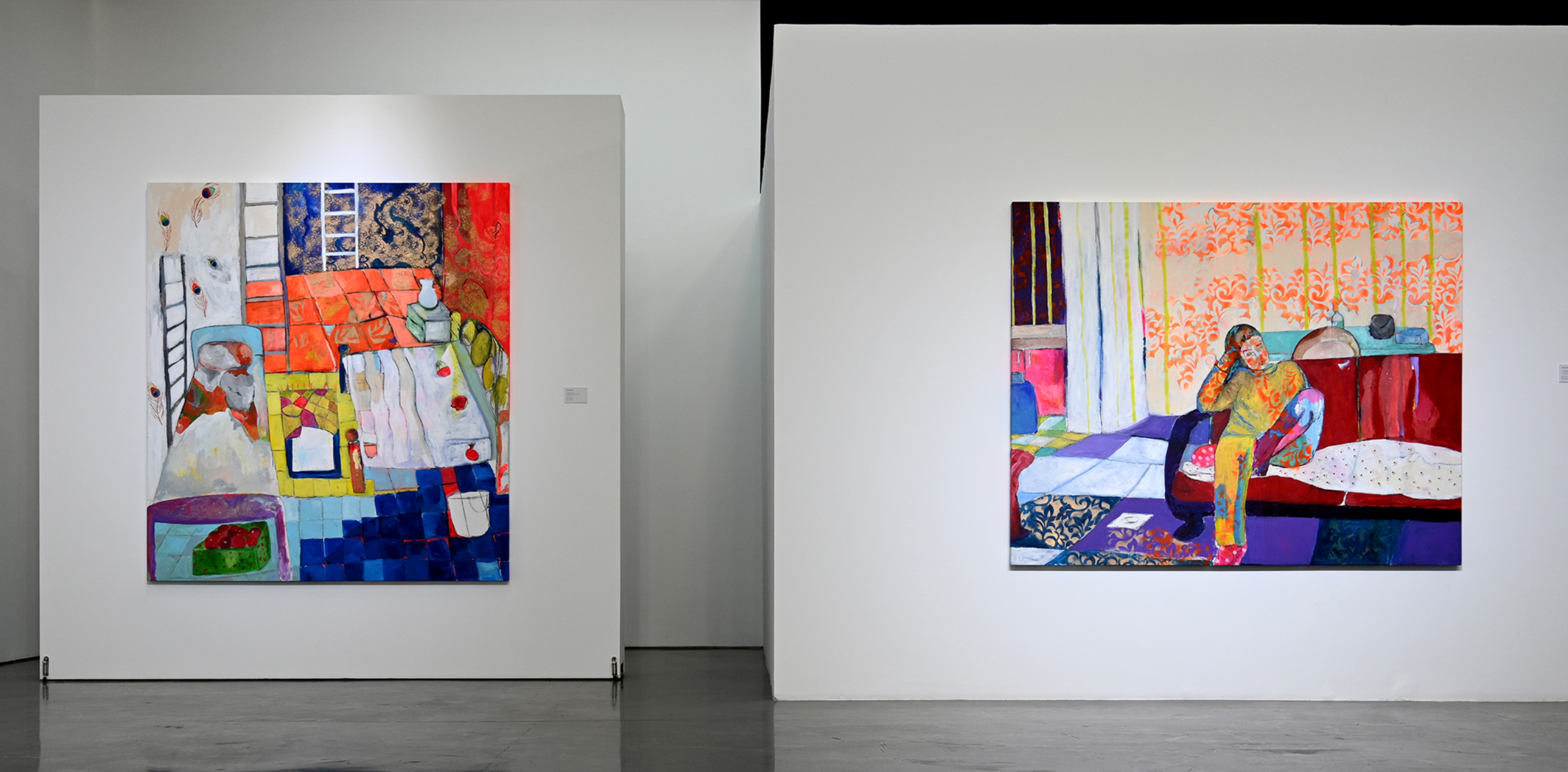
22 May – 28 August, 2022
Inner Sanctuary
by Rana Samara
Location: Dubai
In her new exhibition, Inner Sanctuary, Rana Samara presents her personal intimate space revealing a layer of deep emotions connected with these places. From the comfort of her lounge to a corner in her favorite café, she explores the settings that embrace her daily life. Along the way, she portrays an inner sanctuary visually and sentimentally.
Samara depicts the inside of her world with fine details incorporating daily objects and furnishing. She uses her usual signature of charming colors and stunning decorative motifs to illustrate familiar locations pinned on her daily map; a lively studio, a neat kitchen, a colorful bedroom, corners of several cafes and bars, and even a calm abandoned swimming pool.
Samara uses colors, motifs, and shapes to convey her sentiments showing her content, calmness, anxiety, or frustration. For example, the painting of a hospital room with a half-opened white curtain and a UV bag stand placed next to a bed bears an unsettling feeling. The scattered red tubes on the surface of the colorful floors reflect commotion as if there was an emergency scene. Another artwork depicting an empty bed in a hospital covered with white sheets and an air conditioning system on the wall reflects coldness and stuffiness despite the colorful motifs on the walls. Whereas a bedroom with peacock feathers painted on the background and several ladders around gives a feeling of lightness, weightlessness, and a connection with the skies. Some of her rooms are warm and full of love and colors, such as what appears as a studio, the various window sills, the bathrooms, and the various seating areas.
The way she executes floors in her artworks is revealing, as they hint at the artist’s sentiments towards the rooms she paints. Sometimes they are vibrantly full of pretty motifs, while other times they look like glass; fragile and colorless. In some paintings, she uses sharp and edgy squares, which also enhance a disquieting feeling.
Yet, she continues to leave out one central aspect in her paintings: humans – except for one artwork. For Samara, it seems that humans are not essential, but their evidence is. Hence, there is a subtle focus in the series on their traces. Records of their imprints can be found in every corner. One can see a suit hanging over closed curtains in a bedroom; a kitchen with a slipper in the middle of the floor; another kitchen with plates and food left on the top; a window sill with pots of plants, and cozy chairs with cushions.
Erasure could be a way to capture moments that people leave behind. It could be an attempt at emancipation from the restraints imposed by their presence and an opportunity to reveal concealed feelings of deep sentiments, whether joyful or gloomy.
In one work, Samara paints a young woman sitting on a sofa facing the viewer while wearing a training suit. She rests comfortably on a small blanket while holding her head as if thinking or contemplating. The figure blends with the room’s background while a gas container appears from a far corner.
Join our Newsletter
Sign up for our Newsletter and get all the latest news

